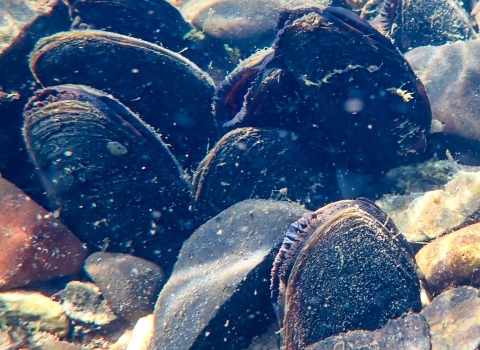North America has the highest diversity of freshwater mussels in the world. America’s Mussels, or clams, are a group of animals so inconspicuous they are often mistaken for rocks. Laying on the bottom of lakes, rivers, and creeks, they rarely move and eat by filtering water for microscopic food particles.
Why Care About Mussels?
They Monitor of Aquatic Health
Healthy mussel populations generally indicates a healthy aquatic system which often means good fishing, good water quality for waterfowl and other wildlife species. Conversely, when mussel populations are at risk, it indicates problems for other fish and wildlife species, and people too.
Their Ecological Value as Filters
Mussels are natural filters, feeding on algae, plankton, and silts; they help purify the aquatic system. Mussels are also an important food source for many species of wildlife including otters, raccoon, muskrat, herons, egrets, and some fish.
They Keep Humans Healthy
As filter feeders, mussels help keep drinking water clean.
Their Cultural Value
Mussels played an important role in the cultural history of prehistoric and recent native peoples. They were used as food and the shells were used for ornamentation, tools, and as a commodity for trade. Indian shell middens (the piles of shells that Native Americans have left behind) extend for miles along sites of old villages and encampments.
Their Rich Biodiversity
In North America, there are nearly 300 species of mussels. Considering that less than 20 mussel species are found in most other countries of the world, these rivers and streams are truly “rich” with mussels species! The loss of any of these species will definitely have consequences on how the aquatic ecosystem functions.






